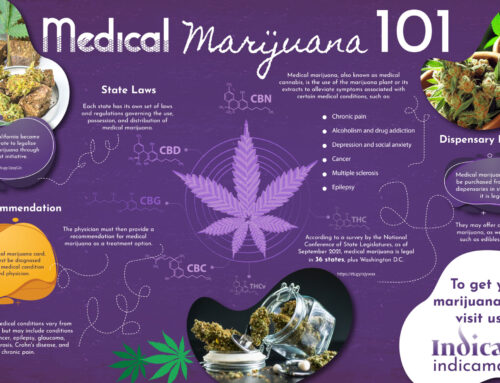In recent times, marijuana has transformed from a maligned drug associated with lazy stoners to a miracle plant filled with medical and therapeutic benefits. As more research emerges on the drug’s multiple benefits, policymakers are becoming increasingly lax about their approach to the drug. While almost all states allow the medical use of marijuana, many states have also legalized recreational use, marking a new era of cannabis’ long and rocky history with US law enforcement.
Due to this changed attitude toward the drug and the publication of new scientific research, doctors are increasingly prescribing marijuana to treat several health conditions. One of these conditions that benefit highly from marijuana is sleep apnea.
Sleep apnea is a breathing disorder that happens during sleep and severely affects the quality of life of people who suffer from it. Doctors in multiple states, including Minnesota, have found that marijuana is helpful for people suffering from the condition. Due to the legalization of Minnesota medical marijuana, physicians prescribe the drug to their patients. This article describes why doctors turn to marijuana to treat sleep apnea.
What is Sleep Apnea, and How Does it Affect People?
A serious sleep disorder, sleep apnea characterized by repeated interruptions in breathing during sleep. These interruptions can last from a few seconds to a minute and occur several hundred times a night. The result is poor sleep quality and excessive daytime fatigue, which can lead to several serious health problems.
Traditionally, sleep apnea has been treated with continuous positive airway pressure (CPAP) machines, which provide a steady stream of air to help keep the airway open. However, CPAP machines can be uncomfortable and difficult to use and most patients feel anxious using them.
Why do Doctors in Minnesota Prescribe Marijuana for Sleep Apnea?
Recently, doctors in Minnesota have begun using marijuana as an alternative treatment for sleep apnea. This is because marijuana contains compounds called cannabinoids, which have been shown to have therapeutic properties. The most well-known cannabinoid is tetrahydrocannabinol (THC), which is responsible for the plant’s psychoactive effects, i.e., the high experienced by people. The second fundamental component of marijuana is cannabidiol (CBD), which is non-psychoactive and has been shown to have anti-inflammatory properties.
Studies have found that THC and CBD can help to reduce inflammation in the airway and improve breathing. Additionally, marijuana has been found to help with insomnia and other sleep disorders, which can be common in people with sleep apnea. This can lead to a better quality of sleep and less daytime fatigue.
Another benefit of marijuana is that it can be used in various forms, such as edibles, tinctures, and topicals, allowing more flexibility in dosing and administration. This can be particularly helpful for people who have trouble using CPAP machines or other traditional treatments. Therefore, doctors have a much easier time prescribing marijuana than traditional sleep apnea treatments.
Final Thoughts
In conclusion, doctors in Minnesota are using marijuana to treat sleep apnea due to its medical properties that can help to reduce inflammation in the airway and improve breathing. Additionally, marijuana’s ability to help with insomnia and other sleep disorders can lead to a better quality of sleep and less daytime fatigue.
If you suffer from sleep apnea, you must acquire a medical marijuana card in Minnesota to use medical marijuana. Visit our website now to consult a state-certified physician and get your medical marijuana card made immediately.







Leave A Comment
You must be logged in to post a comment.